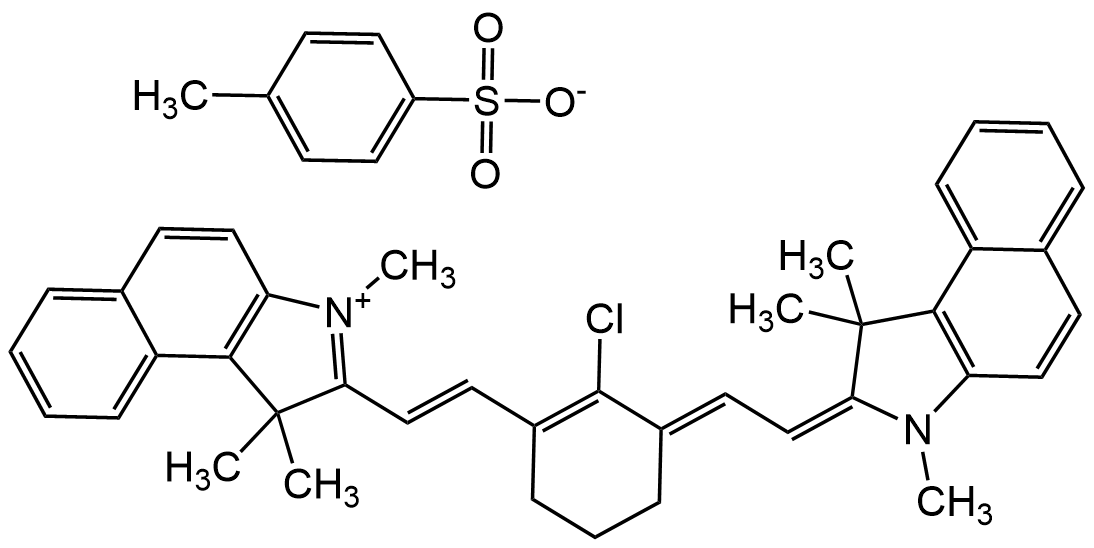
Chemical Structure
IR-813 p-toluenesulfonate
CDX-I0059
CAS Number134127-48-3
Product group Chemicals
Estimated Purity>98%
Overview
- SupplierChemodex
- Product NameIR-813 p-toluenesulfonate
- Delivery Days Customer10
- CAS Number134127-48-3
- CertificationResearch Use Only
- Estimated Purity>98%
- Scientific DescriptionChemical. CAS: 134127-48-3. Formula: C47H47ClN2O3S. MW: 755.43. Soluble in DMSO (20mg/ml) or methanol. IR-813 p-Toluenesulfonate is a functional near-infrared (NIR) cyanine laser dye. Spectral Data: lambdaex=815nm, lambdaem=840nm (MeOH). Used as a building block for the synthesis of fluorescent near-infrared (NIR) dyes. IR-813 has also been used to develop NIR organic light-emitting diodes (OLEDs) and as energy acceptor molecule in FRET experiments. It has been used for visualizing regional lymph nodes in mice or in non-invasive tumor imaging nanoparticles. IR-813 can be used as a probe in NIR spectroscopy due to its specific absorption and emission characteristics and makes it valuable in studying molecular interactions and dynamics. It is useful in medical and biological imaging because NIR light can penetrate biological tissues more deeply than visible light. It can be used in the development of optical sensors that detect specific wavelengths of light, which are then used to measure various parameters such as temperature, pH, or the presence of specific ions or molecules. - IR-813 p-Toluenesulfonate is a functional near-infrared (NIR) cyanine laser dye. Spectral Data: lambdaex=815nm, lambdaem=840nm (MeOH). Used as a building block for the synthesis of fluorescent near-infrared (NIR) dyes. IR-813 has also been used to develop NIR organic light-emitting diodes (OLEDs) and as energy acceptor molecule in FRET experiments. It has been used for visualizing regional lymph nodes in mice or in non-invasive tumor imaging nanoparticles. IR-813 can be used as a probe in NIR spectroscopy due to its specific absorption and emission characteristics and makes it valuable in studying molecular interactions and dynamics. It is useful in medical and biological imaging because NIR light can penetrate biological tissues more deeply than visible light. It can be used in the development of optical sensors that detect specific wavelengths of light, which are then used to measure various parameters such as temperature, pH, or the presence of specific ions or molecules.
- Storage Instruction-20°C,2°C to 8°C
- UNSPSC41116134

![IR 813 tosylate [134127-48-3]](https://www.targetmol.com/group3/M00/37/AD/CgoaEGayUCSEJHwqAAAAAJUYU6k615.png)